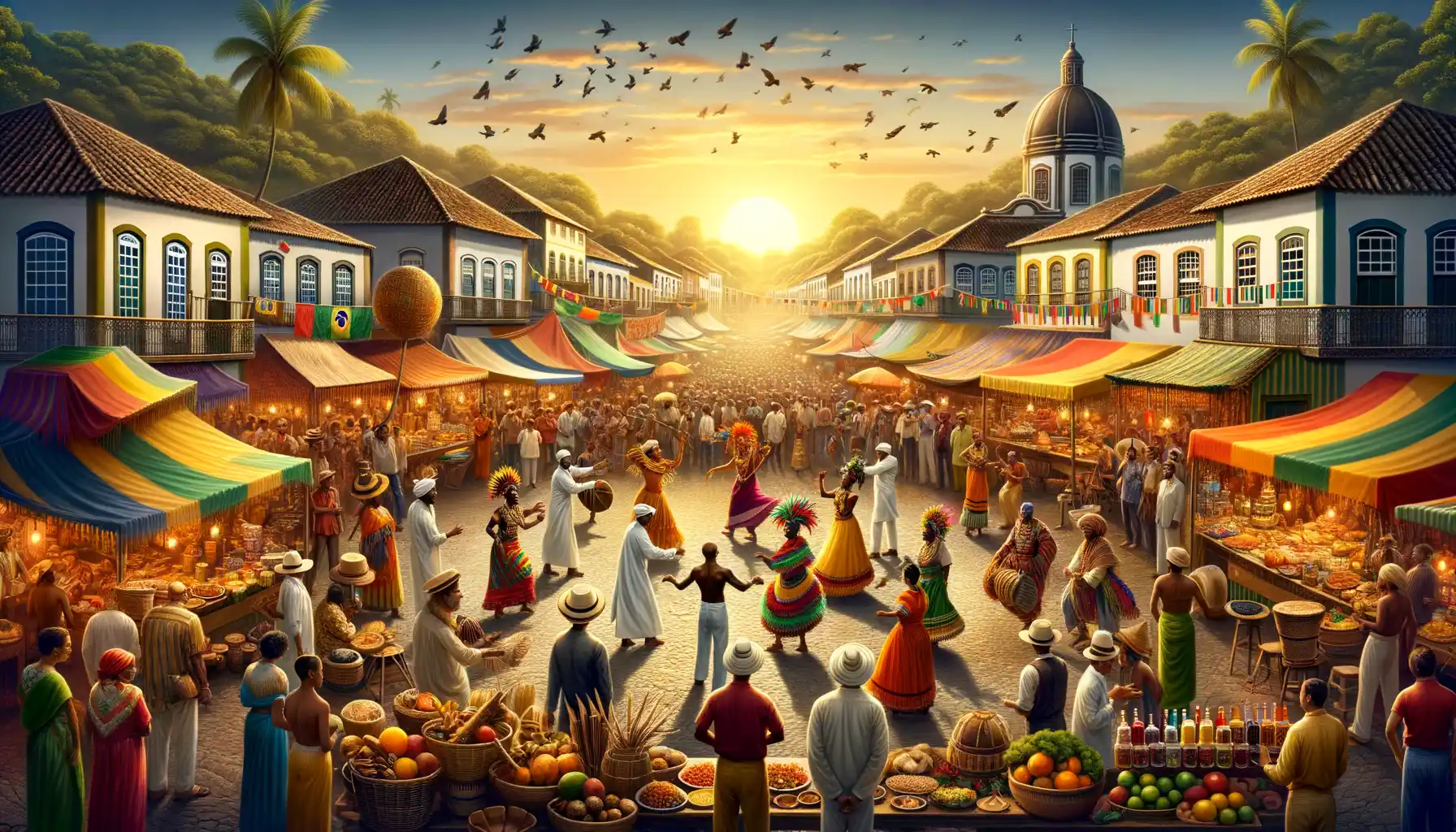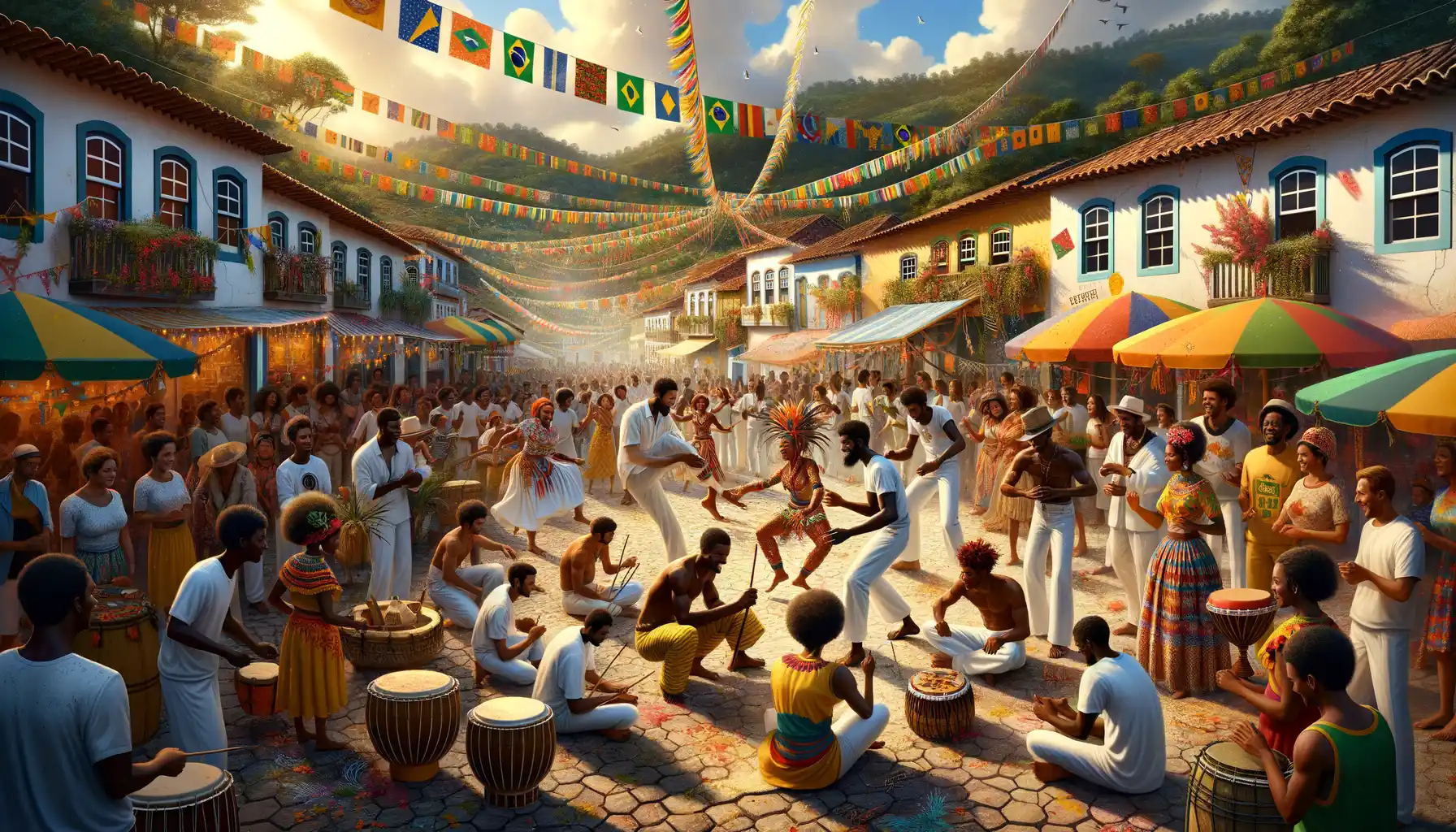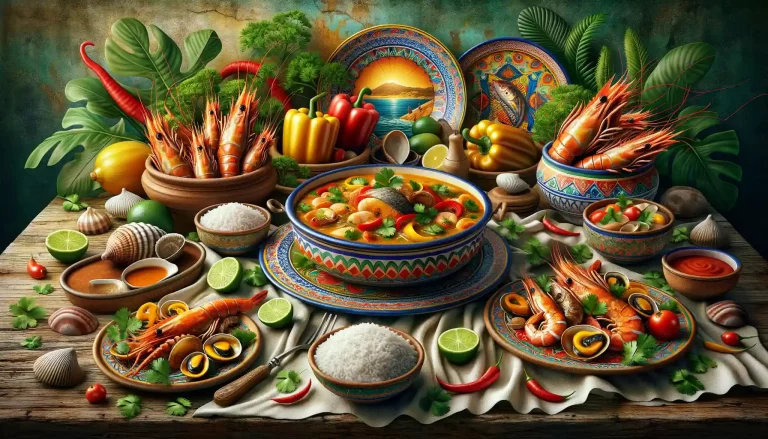Exploring Afro-Brazilian Culture in Tamandaré and Carneiros
Wandering through the coastal towns of Tamandaré and the serene sands of Carneiros Beach, you’ll discover more than postcard-worthy views. Here, Afro-Brazilian culture doesn’t just whisper—it sings, dances, and weaves itself into every corner. From colorful traditions to heartfelt storytelling, the region pulsates with the rhythm of a people who turned resilience into remarkable artistry.
The Art You Can Feel and Stories You Can Hear
In Tamandaré’s bustling markets, you’ll find intricately handcrafted goods—vibrant textiles, carved figures, even drums whose beats seem to echo centuries of history. These treasures aren’t just souvenirs; they’re vessels of tradition passed down through generations influenced by African ancestry. Stop and chat with an artisan; they’ll share tales soaked in hope and struggle, all while crafting beauty with bare hands.
And don’t miss the music. Oh, the music! The lively drums and hypnotic rhythms of maracatu will have your feet moving without permission. Local street performances blend ancestral African beats with Portuguese melodies—a melting pot of sound that connects past to present.
- Dive into a maracatu workshop and learn the art of ceremonial drumming.
- Stop by community-led cultural hubs for capoeira rodas (circles) where martial arts meet dance.
Every corner has a story, a soul, and a contagious energy begging to be embraced.
Spiritual Connections in Everyday Life
Afro-Brazilian spirituality also thrives here, woven seamlessly into daily life. Many locals honor the Orixás, powerful deities rooted in African religions like Candomblé. Visit small altars decorated with candles, fruits, and flowers tucked discreetly into homes or near the sea, reflecting profound respect for nature and heritage.
If you’re lucky, you might witness a dance offering—a moment where humanity and divine presence intertwine under the moonlit sky. These rituals reveal an intimate glimpse into the unwavering spiritual anchor of Afro-Brazilian communities. It’s raw, moving, and unforgettable.
This journey isn’t just sightseeing; it’s stepping into the heartbeat of generations. Afro-Brazilian culture here is alive and waiting to welcome you with open arms—and maybe even a drumbeat.
Historical Significance of Afro-Brazilian Roots in the Region

Echoes of Strength and Resistance
Walking through the streets of Tamandaré and Carneiros, it’s impossible not to feel the pulse of history, a heartbeat powered by the enduring spirit of Afro-Brazilian communities. Their journey is woven into every corner—a story of resilience, creativity, and cultural fusion. From the 16th century onwards, enslaved Africans brought to Brazil carried more than chains; they transported worlds of wisdom, art, and spirituality that would forever shape the region.
These roots of resistance birthed traditions that defied oppression. The drumbeat of maracatu became both protest and celebration. Capoeira, now admired as a dazzling martial art, emerged as a means of survival disguised as dance. Every thread in the vibrant tapestry of Afro-Brazilian heritage is a testament to the human power to create even in the darkest of circumstances.
Landmarks That Whisper Stories
Some places hold histories that speak if you pause to listen long enough. Visit:
- Quilombos: These were safe havens for escaped enslaved people, where their descendants still preserve ancestral customs today.
- The sacred sands of Carneiros Beach: Here, Afro-Brazilian rituals are sometimes performed, blending spirituality with nature’s beauty.
Each spot is a living reminder that Afro-Brazilian culture isn’t just part of history—it defines the soul of this region.
Local Traditions and Celebrations Highlighting Afro-Brazilian Heritage

Vibrant Rhythms and Spiritual Connections
In Tamandaré and Carneiros, the Afro-Brazilian spirit is alive in celebrations that pulsate with energy, pride, and ancestral connection. One of the most mesmerizing experiences is witnessing the rituals of Candomblé, a powerful Afro-Brazilian religion that weaves together African traditions and spirituality. Imagine standing beneath the stars while worshippers dressed in hues of white perform rhythmic dances to the beat of drums, honoring the Orixás, their deities. It’s not a show—it’s pure soul.
And then there’s Maracatu. These processions feel like a heartbeat come to life, with elaborately adorned performers parading through cobbled streets, drums shaking the ground beneath your feet. The sounds and sights will make your pulse race—each percussion beat a tribute to the region’s Afro-Brazilian history.
- Afoxé groups: Infusing music with lyrics that echo Afro-Brazilian stories and resistance.
- Handcrafted clothing: Brightly colored garments represent African influences and tales of resilience.
Every tradition here brims with significance, reminding visitors of a people whose heritage refuses to be forgotten, resonating in every drumbeat and every twirl of fabric.
Culinary Delights Inspired by Afro-Brazilian Cuisine

Flavors That Dance on Your Palate
Step into the vibrant world of Afro-Brazilian gastronomy, where every dish tells a story rich in culture and heritage. In Tamandaré and Carneiros, food isn’t just sustenance—it’s a celebration, an embrace of history that echoes flavors brought from Africa and lovingly adapted to Brazilian shores.
Imagine biting into a bowl of steaming hot acarajé, crispy on the outside and soft within, a symphony of black-eyed peas fried in red palm oil and stuffed with spicy shrimp paste. Or picture the silky texture of vatapá, a luscious stew made with peanuts, coconut milk, and fragrant spices, wrapping you in its warm embrace like an old friend.
- Need something refreshing? Try a sip of sweet-and-tangy umbu juice, made from a native fruit cherished for generations.
- Looking for boldness? Dive into the fiery thrill of moqueca de peixe, a seafood stew slow-cooked in clay pots with a whisper of dendê oil.
Here, every bite feels like stepping closer to the heart of Afro-Brazilian life—a flavorful, unapologetic connection to the past, served on a plate.
Where to Savor These Treasures
From beachside kiosks in Carneiros to cozy local kitchens in Tamandaré, local chefs transform ordinary meals into unforgettable experiences. Take a moment to chat with these culinary artists—many have inherited techniques passed down through generations, shared by word of mouth rather than recipe books.
Feeling adventurous? Seek out small, unassuming restaurants where grandmothers (the true guardians of tradition) are cooking with love. If you’re lucky, they might teach you how to grind cassava flour by hand or explain why every spoonful of farofa carries a piece of their soul.
Whether you’re savoring smoky grilled fish under a starlit sky or tasting the creamy sweetness of canjica during a local festival, each meal unlocks another layer of Afro-Brazilian identity, one delicious discovery at a time.
Sustainable Tourism and Preserving Afro-Brazilian Culture

Embracing Sustainability While Celebrating Afro-Brazilian Legacy
Imagine stepping into the rhythm of Tamandaré and Carneiros: the vibrant, drum-filled heartbeats of Afro-Brazilian culture surround you. The stories of strength, resistance, and joy these communities have woven over centuries demand more than admiration—they deserve preservation. This is where sustainable tourism enters as a key player.
Exploring responsibly doesn’t just mean snapping beautiful photos or sampling local dishes—it’s about supporting the lifeblood of the region’s culture. For example, when visiting, why not shop for handmade crafts infused with symbols of Afro-Brazilian heritage? You’re not just buying an object; you’re investing in the artisans who keep their ancestors’ traditions alive.
- Join workshops led by local masters—learn to dance to the syncopated rhythms of maracatu or create art inspired by Candomblé.
- Engage with community-run tours that unveil hidden stories passed down through generations.
Preserving Traditions Through Connection
Every conversation shared with an elder or street vendor in Tamandaré is a thread in a larger tapestry. By showing respect and curiosity, you’re helping to ensure these cultural treasures endure. After all, culture isn’t found in museums alone; it lives in the laughter of fishermen, the scents of a freshly cooked moqueca, and the prayers sung at dawn. Sustainable tourism gives back, preserving not only the land but also its soulful essence.





